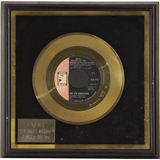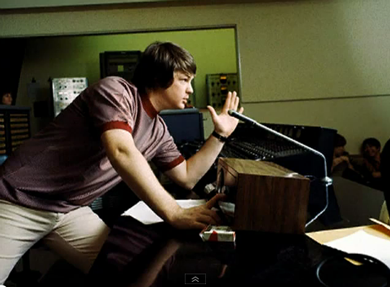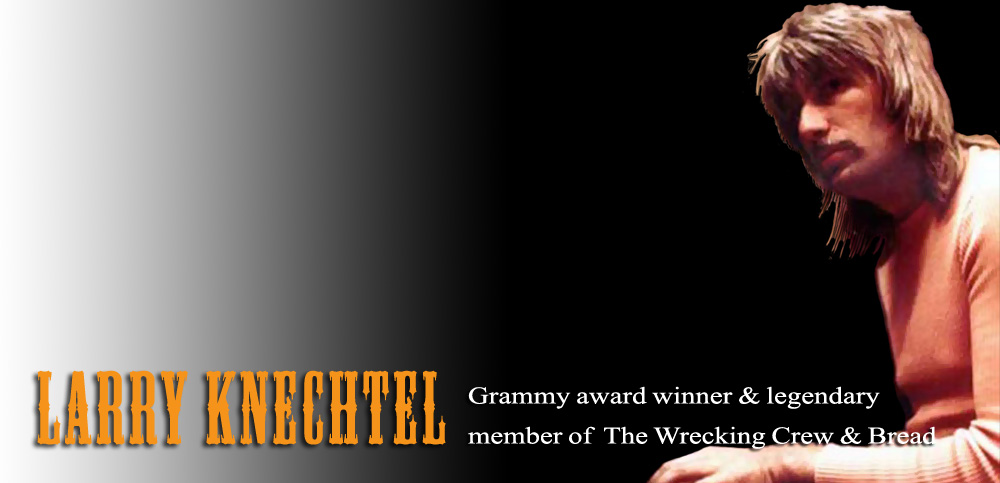
.jpeg.jpg)
This conversation, with David Leaf, originally appeared in "The Making of Pet Sounds" book, part of Capitol's Grammy-nominated 4-CD The Pet Sounds Sessions box set, which was released in 1997.
LARRY KNECHTEL: "I started working with Brian because I had been working with Spector. Phil often had three piano players on the same date...Don Randi, Leon Russell (nee Russell Bridges) Al de Lory and myself depending upon who was available. Phil was hot. "The first time I worked for Brian, it must have been on a publisher's demo or something small. We all lined up to get paid, and he asked me, 'Do I owe you from last week?' I decided to tell him the truth.
I was very happy to be a sideman; I like being involved. I always played piano for Brian, except the one time I played bass on 'Help Me Rhonda.' I don't even know if I made the record.
"What made us want to be there, whenever Brian or Phil called, was that you knew it was gonna be exciting or good. After 'Surfer Girl' and 'In My Room' we recognized Brian had something special. It felt good to be on his sessions, because you felt it was something important. Those songs were a class above. It's like hearing Bach when he was twelve and then forty. He still sounded like Bach. Those were the clues, and he just needed to do it more to find out where he was gonna go.
"He worked with the basic rhythm section first...to get the feel. Then he would bring in the other players. One thing he did was, according to union regulations, you could do three songs in a three-hour session; we rarely did more than one and we often went overtime. We liked that a lot.
"He came in with a good idea of what he wanted. Most of the time it was chord charts, but especially on Pet Sounds, there were certain orchestrated lines he had written out. Some producers, you didn't like them telling you what to play but that never happened with Brian. And that was even though sometimes you wouldn't understand what he wanted you to play. You would have to trust him.
"He would come over and show you what to play. He had definite ideas about what inversions he wanted. If the keyboard guys didn't get it, he would show us himself. Sometimes, the keyboards were pretty much the same part ...except up a register on harpsichord for sound purposes but the same line as piano. If we weren't getting our part, he was quick to come over and physically demonstrate.
"At some point, he would invariably play the song for us. The chord sheets or the charts don't tell you enough. He would hum and play the piano or electric piano and show us how it goes, and we would get the hang of it. He would go through it with each of us, and that gave it a better sense of how it was supposed to feel. Then he would add guitars, horns. If it was gonna take him a long time to work something but, he would have us go in the hall, but usually, we didn't stray too far.
"He had a part that he wanted you to play, and it was usually a richly-voiced part. That's one of the things I loved 'bout working with him, because his sense of voicing was really great. It was interesting to watch him grow, because the more he did it, the more confidence he got and then he started reaching further.1 learned a lot. I was pretty much a four-chord rock 'n roll nightclub player when I started.
He did tracking sessions that involved all the instruments, because that way, he knew how the texture and the feel and all of that was gonna be. He didn't start out with four pieces and layer. He layered his vocals. It helped is figure out our role in the piece. I usually played harpsichord, electric piano or the Hammond B-3 organ. Leon usually played the grand.
His orchestrations, his sound textures were unusual. I'm an arranger too, and he orchestrated wonderful, contrapuntal lines. I played organ on 'God Only Knows.' I haven't played that song since the session, and not long ago, went down in the basement to play it. His bass lines were great; he didn't do the standard stuff. He would make chord change...move it from A to E over G sharp and it was a beautiful move. The changes in the left hand always amazed me.
At the sessions, it took us a good two hours to get to the point where we would begin to even cut the track. It was complex music...all those various elements. Not a lot of people cut that many instruments at one time.
Once it was going in the room to his liking, he wants to hear how it sounds over the speakers in the booth. Sometimes, you wished it sounded in the booth like it did in the headphones.) Brian could concentrate on the sound in the booth; Chuck really knew what he was doing. And then you also had to mix it as you were recording because you didn't have the number of tracks you do now. You were forced to make changes on the spot to make things work better. And you also mixed in mono. In those days, you heard records on a car radio. And that was mono, and they used to mix on the speakers from a '57 Chevy. The way you would hear records at the drive-in with your girlfriend.
A big difference between Phil and Brian's mixes was that Brian left the echo alone. We did a lot of things at Gold Star and at Western, and both those places had real good natural echo chambers. Brian didn't overdrive 'em; he never let the echo knob interfere with what he wanted to hear. He used it as augmentation, the way it should be used, as special effect, like on timpani. If you do it too much, you can't distinguish the instruments. And his percussive effects were great. It's part of the orchestra that most people never really bothered with, but he used neat accents, highlights, especially for the kind of compositions he was doing. Nobody else was doing that.
On Pet Sounds, I did a two-handed rhythm thing on the B-3, alternating hands between the manuals. I did that in 'Wouldn't It Be Nice' and 'God Only Knows.' He had me do it with one hand on 'Good Vibrations.'
My criteria for great records are feel and harmonic sense of it...voicings. Those are the first two things I listen to. He had that covered really well. The way he wrote and composed it went together extremely well. He took the Four Freshmen, and he orchestrated for a rock band. We [the sessions players] didn't run across those harmonies anywhere else.
"All throughout Pet Sounds, I felt it was a special project; we all did. I would go home and play some of the sequences just because I loved the way they went. And at this point, we hadn't heard any vocals. I'm proud of it. Period. The album had a lot of impact I don't take credit for anything, but I was part of it. It's one of those milestones.
"After Pet Sounds came out, I went out and bought it, which was something I never did. And I had him sign it. That meant a lot to me. That record has stood up for the same reason people still listen to Mozart and Bach.
Because the melodies are beautiful, and it is certainly sophisticated. 'God Only Knows,' 'Caroline, No.' Listen to the melody, and what he does with orchestration and harmony. It's beautiful."
This interview appears courtesy of David Leaf. Copyright 1997 DLP All rights reserved. Special thanks to David Leaf and Album Liner Notes for their contributions to this site.
|
 Larry's Gold Larry's Gold
Read about just a few of the Gold and Platinum records Larry worked on during his storied career.

Behind The Sounds
Watch the YouTube clip documenting the making of "Wouldn't It Be Nice" from Pet Sounds
|





